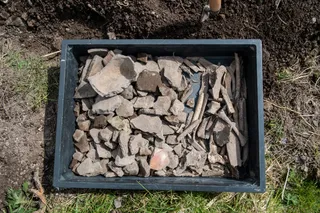We often associate the word “caveman” with crude simplicity. But based on a new finding — the first ever evidence of Neanderthals' ability to extract tar from plants — maybe we should, instead, use it as a stand-in for technological innovation.
Researchers discovered a new kind of fire pit dating back about 60,000 years. After analyzing its novel design — a ringed trench rather than a simple pit — and the traces of chemical components left behind by burning, they determined that Neanderthals used it to produce tar from rockrose (Cistus ladanifer). They then employed that tar to attach stone to wood for making both tools and weapons.
"As far as we know, this is the first evidence of the use of Cistus ladanifer for obtaining tar by Neanderthals," says Juan Ochando, an author of the study and plant biology professor at the University of Murcia, Spain. "For this reason, ...














